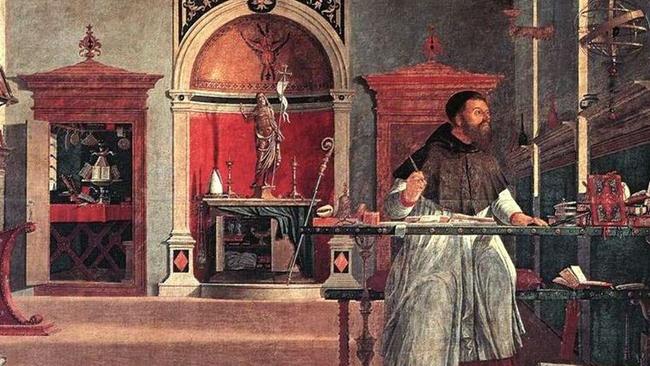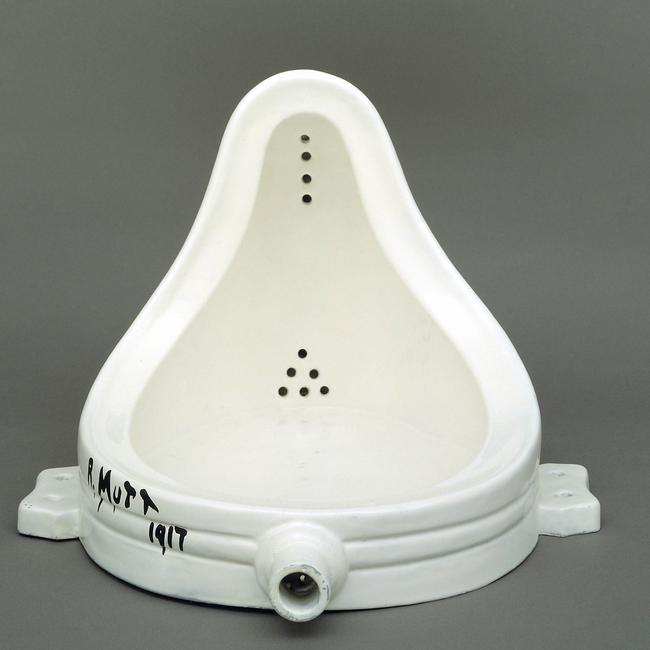Ructions in the Middle East a momentous test for cohesion of Western democracy
There’s a new urgency to refocus our attention on that age-old question: what are the ‘objects of love’ sufficient to bind our society?

We cannot aspire to an accurate understanding of Western civilisation without understanding its treatment of beauty. From antiquity the claim has been made that there is a relation between the true, the good and the beautiful.
However, in our own time this classical relation has been thrown aside. Our current postmodern malaise is a direct consequence of this development.
Popular culture is imbued with philosophy precisely because philosophy concerns itself with matters that are fascinating to the human mind. When Harry Styles sings on repeat that “in this world, it’s just us, you know it’s not the same as it was” he deposits Nietzschean philosophy into my unsuspecting 12-year-old daughter’s subconscious; for “God is dead … And we have killed him”.
Postmodernism’s response to the classical claim that there is a relation between beauty, truth and the good is succinctly put by Friedrich Nietzsche: “It is unworthy of a philosopher to say that the good and the beautiful are one, if he goes so far as to say ‘and also the true’, we should thrash him.”
Art is similarly susceptible to philosophical currents. Postmodern art’s eschewal of art’s traditional role in the search for beauty and its wider social implications is ably illustrated by Marcel Duchamp’s submission of an everyday porcelain urinal signed and titled Fountain into a 1917 exhibition. The intense response Duchamp inspired among his contemporaries signified both the novelty and the profound consequence of his declaration.

In repudiating the aesthetic judgment and replacing it with the banal or ghastly, Fountain signified postmodern art’s repudiation of beauty’s classical relation with truth and with the good.
Fifty years before our current culture wars and identity politics Alexander Solzhenitsyn presciently wrote in his Nobel prize in Literature acceptance lecture that “the message that there are no stable universal concepts of good and evil, that they are all flexible and changing” and “that therefore you should always act exclusively in the interests of your own party … rend and rive our world” and inspire a “never-ending series of civil wars”.
Aware of its declarative power, warring parties seek to wield the law against each other in this world riven by paradox. As philosopher Iain Benson has said: “They will rail against injustice having denied that there can be objective goods.”
Encroachments of beauty within our jurisprudence have significant consequences for the contemporary debate as to whether postmodernism is to prevail against the beautiful, the true and the good. Just as philosophy has subtly populated popular culture (without any apparent self-awareness on the part of its paramours) and art, so philosophy imbues our jurisprudence. In a campaign now ranging over numerous jurisprudential fronts, judges have waded into the agon raging over the fundamental questions of aesthetics: what is beauty and what is art?
Immanuel Kant’s seminal assertion that a universally agreed notion of beauty is available to us through the pure aesthetic judgment has had profound implications within the common law of charitable trusts.
Kant’s belief in the universality of the aesthetic sense found its expression in the French revolutionaries’ establishment of the first modern public art gallery in 1793, the Louvre, on the then revolutionary understanding that aesthetic beauty could be accessed by all.
This novel belief in the universality of aesthetic taste is plainly exhibited in Justice Michael Fox’s recognition that the “education of artistic taste is one of the most important things in the development of a civilised human being” and thus worthy of the status of a charitable purpose at law. However, this common-law doctrine has led judges to the unfortunate position of policing Kant’s philosophical boundary between the beautiful appreciable to our disinterested pleasure and the banal or plain ugly.
In the famous Pinion’s case a gift of a studio, paintings and furniture as a collection to form an exhibition led Lord Justice Charles Harman to declare: “I can conceive of no useful object to be served in foisting on the public this mass of junk.”
The law is thus cast as a protagonist in the contemporary debates concerning truth and the good inspired by the emergence of postmodernism. In recognising the reality of objective beauty it stakes its claim against Nietzsche’s desire to thrash him who asserts the true, the good and the beautiful are one.
The common law of charities goes even further when, imbibing the groundbreaking thesis of GWF Hegel, it accepts the claim that art may instantiate a culture’s own philosophical distinctiveness in a manner not immediately perceptible to its own inhabitants.
David Malouf provided one of the grounds for the newly legislated charitable purpose of “advancing culture” when he wrote of art: “What outsiders recognise as original and unique, we experience simply as what we are, what we have discovered by reflection from what we have made, and which nothing else could have revealed to us.”
Solzhenitsyn asserted a similar conclusion when asserting that art, specifically literature, “becomes the living memory of nations”. His belief in beauty as a society’s ultimate preserve of truth bears all the more weight when it is recalled that it comes to us from a man writing from within the Soviet state, in which he was effectively imprisoned. His claim was not without evidential basis. From within the confines of that state he attested to the preservative and redemptive effects of the writings of Leo Tolstoy and Fyodor Dostoevsky who, owing to their momentous contribution to the Russian cultural geist, the Soviets dared not ban.
As it is for popular culture and high art, under the influence of these deep philosophical currents our law finds itself a protagonist in the debates inspired by the emergence of postmodernism. These are but two of the numerous examples I identify in Beauty and the Law whereby our jurisprudence declares upon the side of beauty, truth and the good.
The current domestic tensions arising from the ructions in the Middle East provide a momentous test for cohesion within the political project of Western democracy. However, we are not the first multicultural societies in which political philosophers have grappled with the means to assure social unity.
In the last days of the Roman Republic Cicero theorised that a successful republic could comprise an assemblage of persons associated by common acknowledgment of certain rules for right and the pursuit of justice.
Four centuries later Augustine critiqued that definition as inadequate to the task of recognising and deepening the work of caritas. He offered a challenge in reply: the true republic is constituted by “an assemblage of reasonable beings bound together by a common agreement as to the objects of their love”.
Augustine’s challenge to find common loves remains as relevant to the project of political ordering today as it was in the last days of the Roman Empire. The current tensions refocus our attention on that age-old question with a new urgency: what are the “objects of love” sufficient to bind our society?
In that search the law has a significant role to play by defying the ructions accompanying postmodernism and affording the space for beauty, truth and the good to make their continuing claims on us.
Mark Fowler is principal of Fowler Charity Law. Beauty and the Law (Shepherd Street Press, 2024) will be launched by Justice Patrick Keane at the Banco Courts in Sydney and Melbourne on Tuesday and Wednesday next week. The Sydney event will also launch the NSW Christian Lawyers Society Inc.







To join the conversation, please log in. Don't have an account? Register
Join the conversation, you are commenting as Logout